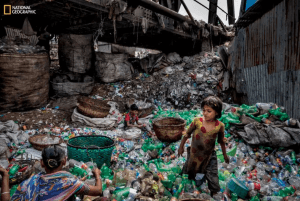Hi everyone! Our journey is about to come to an end, but the last step is possibly as important as the first! Now that we have successfully made our own personal green shifts, we need to spread the knowledge to others so they can begin their own. Now, I know what you’re probably thinking, “Sarah, don’t tell me that we are going to be one of those people that shame everyone else if they don’t sew their own clothes and live in a self-sustainable tiny house in the woods!” The answer to that is a big no. I don’t like being shamed for my habits any more than others, but that is not what we are trying to do here. In order to spread the green shift, we can’t force it on others. We can only provide them with knowledge and encouragement so that they can want to do it for themselves. These should be gentle nudges to prompt people you are close with to start thinking about their habits.

Most importantly, to get people to start the green shift, you can’t just tell them to. You have to work on it together. Go out and plant some trees with your coworkers, plant vegetables in the community garden with your neighbors, or pick up some trash in the parking lot with your family.
Say you are out shopping with your best friend and they get a disposable plastic bag for their item. In this scenario, I often gently suggest that they carry the few items instead of getting the bag or show them one of my cute reusable bags and encourage them to get one. I have done this with one of my close friends before (well, actually I grabbed the plastic bag to put it back and carried her stuff for the rest of the day, but maybe that was a little forceful). What I have learned is that being gentle always works better.
Maybe you eat lunch with your coworker that uses plastic dishes and utensils every day. I would probably show them my reusable lunch box. It has really cool compartments so you can portion your food (and keep different foods from touching, which is a big plus for me). I try to use different selling points than just being eco-friendly when suggesting products to people. Then, if they don’t care about the reusable part, maybe they really like the different compartments for food. This also helps to reduce the shame factor as well.
We can also provide others with knowledge so that they want to start the green shift for themselves. This site gives a few facts that are a quick read and easy to share. You can slip these facts into unrelated conversation, repeatedly post them on social media, or make posters to hang in your dorm window for all to see (just kidding, those may be a bit much, but if you are all for that then go for it).
If you are going out to the farmer’s market or cleaning up litter, invite some friends! Not only will it make it much more fun, but it will get them involved in helping the environment. Working as a team to tackle big challenges

like cleaning up a river will make it so much more manageable and will give everyone a sense of accomplishment. Maybe you can make it a monthly habit!
So, there we have it folks! Thank you so much for spending the past few months with me on this journey to reduce our impact on the environment. So now we must continue these practices and spread the green shift to others. Together we can make a real difference. Thank you!



















